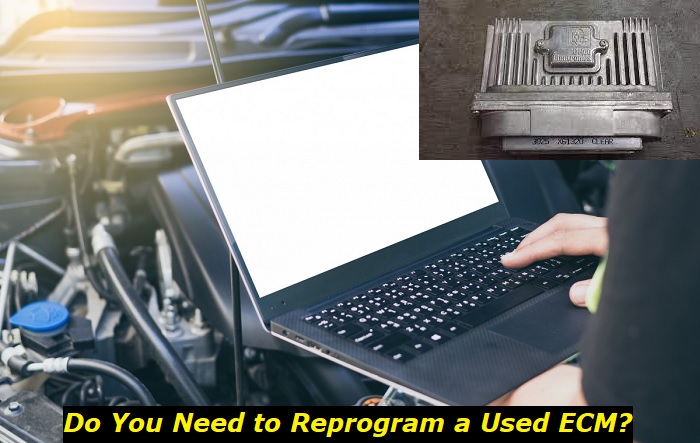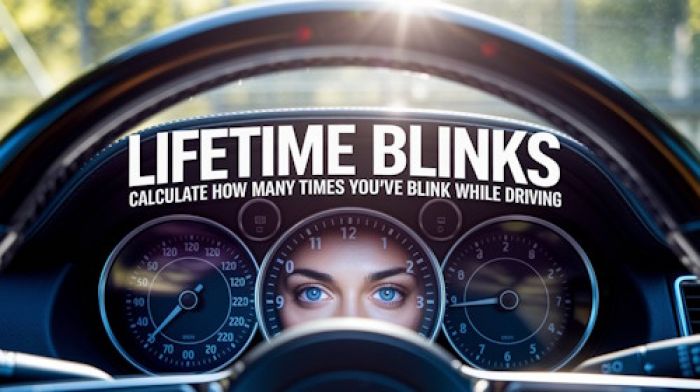If you decide to go for a used ECM, you will have to reprogram it. By reprogramming the ECM, you can update to the most recent calibration file available. Also, ECM reprogramming fixes some issues related to emissions and the check engine light.
ECM problems highlights
- Module's importance:Extremely high
- Prone to failure:Yes
- Reasons for failure:Water, damage, software, low voltage, high voltage
- Ways to reset:Cut power, use scanner tool
- Sphere of control:Engine and emissions
- Symptoms of failing:Engine anomalies, CEL light, no start, random warnings
- Price to repair:$150 - $350
- Price to replace:$800 - $1,700

What Does It Mean to Reprogram A Used ECM?
As the car's computer, the ECM has an operating system and software. The software provides instructions for the ECM to control electrical systems in vehicles. Occasionally, ECM service providers release new ECM software updates.
As the software provider releases a new update, they can choose to add some new features and even delete some older ones. By reprogramming your ECM, you upgrade the ECM software to the latest update. The software update fixes glitches and issues in the system.
For used ECMs, it's advisable to get a reprogramming service. Used ECM vendors usually get the ECMs from salvage cars. Also, as fuel injection cars age, the chances of ECM damage increase.
Hence, it's good practice to reprogram used ECMs. Reprogramming or reflashing will enhance the car's reaction and also improve performance.
What is The Difference Between ECM Programming and Reprogramming?
While on this topic you'll keep hearing of ECM programming and reprogramming. Sometimes, these words are even used as if they're interchangeable. Though both concepts are similar, there's a difference.
Understanding and using the correct terms will be helpful when doing further research on ECM repair and replacement. The knowledge would also be useful when speaking to professionals.
In the context of car computers, programming refers to the process of installing software in a control module after replacing the module. ECM programming or flashing is an essential step taken after a model has been replaced. If you replace a module without programming it, the car might not work.
Some drivers confuse programming and changing engine parameters. Both services are different from each other. You can decide to change your engine's maximum cruise control speed or the idle shutdown timer parameters.
The term reprogramming refers to when you update the operating system software to the latest available version. Reprogramming an ECM can fix check engine lights and some other bugs.
Do I Need to Reprogram A Used ECM?
Yes, you need to reprogram a used ECM else it won't work properly. For modern OBD2 cars, reprogramming used ECMs is a necessity. However, this rule is not set in stone because there are some exemptions.
On a large scale, everything depends on the vehicle's age and the presence of anti-theft systems. For older cars with an OBD1 port, you can replace the ECM without reprogramming it. As long as the used ECM is from a vehicle of similar make and specifications, you can skip the reprogramming step with older cars.
With modern cars, everything gets more complicated when there's an anti-theft system on the car. If there's a security system, you'll have to program the ECM, so it can recognize the car keys. You also have to reprogram the used ECM if it's from a different car model.
Newer cars with lots of electronic systems rely heavily on the car computer. A used ECM has to undergo reprogramming before it starts operating in such a car. Even new ECMs have to go through reprogramming or reflashing before they start working.
In countries like the United States, all cars must have their VIN programmed in the car computer. To write the VIN in a used ECM, you'll have to reprogram it. On the downside, you cannot easily clear a VIN from the car computer once you write it into the system.
Some car brands do not follow the rules concerning used ECMs and reprogramming. For instance, you can not reprogram or exchange used ECMs from BMW vehicles. The manufacturer has a smart engine management and security system that prevents ECM swapping.
BMW's immobilizer stops the car from running if it doesn't recognize the key's signal. The system also prevents you from exchanging ECMs and reprogramming the system without passing through loopholes.
What Happens If I Don't Reprogram The ECM?
The answer to this question depends on the type of car and ECM you're dealing with. There's no problem if you don't reprogram the ECM in an old model. Vehicles from the 1980s and even some from the 2000s offer plug-and-play ECMs.
With such cars, you can just pick up a replacement and plug it into the car. However, the replacement ECM must come from a car with the same model or similar specifications as your car.
Modern cars are directly opposite in this area. In most cases, the car computer won't function at optimal level without reprogramming. Cars with key recognition systems will not even open if the replacement ECM isn't reprogrammed.
Also, using an ECM without reprogramming can trigger the check engine light. When the car's VIN doesn't match the ECM, you can get the diagnostic trouble code "DTC P0630" on the screen.
The code implies that the VIN is not programmed and doesn't match the ECM. While this code is generic and won't cause major issues, I'd advise you to fix it as soon as you can. One way to fix the problem involves reprogramming the ECM and writing the VIN in it.
Advantages of Reprogramming The ECM
There are numerous advantages associated with reprogramming the ECM. Often, gear heads relate ECM reprogramming, reflashing, or remapping with performance. However, the benefits are much more diverse.
Some advantages of reflashing a used car computer include:
1) Updates The Car Computer's Software
Car computers usually last throughout the vehicle's lifetime. They also rarely fail before the car gets to around 75,000 - 125,000 miles. Despite their longevity, manufacturers regularly release software updates for the ECM.
The intervals for updates depend solely on the manufacturer or ECM service provider. By reprogramming the ECM, you automatically upgrade the ECM's software. The update clears malfunctions in the system and turns off the check engine light if it is illuminated.
2) Enhances The Engine's Performance
Race car enthusiasts use reflashing as a tuning technique to improve their engine performance. When companies build cars, they include some safeguards as well. The ECM has a buffer that protects the engine from various circumstances.
In the same vein, the built-in buffer allows the engine to meet state environmental emissions standards. Through reflashing, you can customize the ECM to match your performance needs.
With reflashing, the performance improvements are immense. You can increase the amount of torque and even make the car more responsive. By changing some engine parameters, you can bump up the engine idle speed, spark timing, and others.
A used ECM can gain more performance after reflashing but for better results, you can get an OEM ECM. A professional tuner is also your best bet if you want grand results.
3) Optimizes The Fuel Efficiency
Aside from improving engine performance, reprogramming the ECM can also increase fuel efficiency. Normally, the ECM directly affects the state of fuel consumption and economy. A failing ECM will decrease fuel efficiency.
With the right settings, you can increase fuel efficiency and decrease fuel consumption.
Disadvantages of Reprogramming The ECM
While ECM reprogramming has loads of benefits, there are some disadvantages. Some of these disadvantages are minor while others are dire.
Here are some of the disadvantages of reprogramming the ECM:
1) Possible Engine Damage
This disadvantage mainly results from altering ECM settings for performance and power. Manufacturers have a very good reason for putting barriers and buffers on the ECM.
Altering the ECM settings for performance can be a double-edged sword. The changed settings can cause strain on the engine parts and lead to engine damage over time.
2) Car Warranty and Insurance Could be Voided
Another disadvantage of reflashing is that it can void your car warranty. Car brands usually give about five years of warranty. They also have terms and conditions for the warranty.
Making modifications to your car systems is one of the fastest ways to void your car warranty. Supposing your car breaks down, there's a possibility that you won't be eligible for a warranty if the manufacturer finds out that you tampered with the ECM.
3) The same thing goes for insurance companies
If you carry out the reprogramming service yourself, the outcome might be unknown. You can end up damaging your system especially if it's your first time doing a reflash.
How To Reprogram A Used ECM
ECM reprogramming is one service that is left to professionals. For starters, the ECM controls many functions in the car and it's also expensive. If you decide to reprogram your ECM at home, you can follow the simple steps below.
- Firstly, you need to do extensive research. Reprogramming can be different depending on the vehicle's make and model. For instance, Nissan usually has a more complex reprogramming procedure.
- Make sure you get all the tools needed. Ensure that the tools and software are compatible with your car. For the reprogramming service, you need to get a reprogramming software and a car computer programming device.
- Inspect the vehicle and make sure it's in optimal condition. The battery should be charged, so the car doesn't go off during the reprogramming process.
- Follow the instructions on the programming device and connect it to your ECM.
- Select your desired parameters and start the reprogramming process. Your choices should be guided by research you've done and the manufacturer's instructions.
- After completing the process, take your car on a test drive and check if everything works as expected.
About the authors
The CarAraC research team is composed of seasoned auto mechanics and automotive industry professionals, including individuals with advanced degrees and certifications in their field. Our team members boast prestigious credentials, reflecting their extensive knowledge and skills. These qualifications include: IMI: Institute of the Motor Industry, ASE-Certified Master Automobile Technicians; Coventry University, Graduate of MA in Automotive Journalism; Politecnico di Torino, Italy, MS Automotive Engineering; Ss. Cyril and Methodius University in Skopje, Mechanical University in Skopje; TOC Automotive College; DHA Suffa University, Department of Mechanical Engineering






Add comment